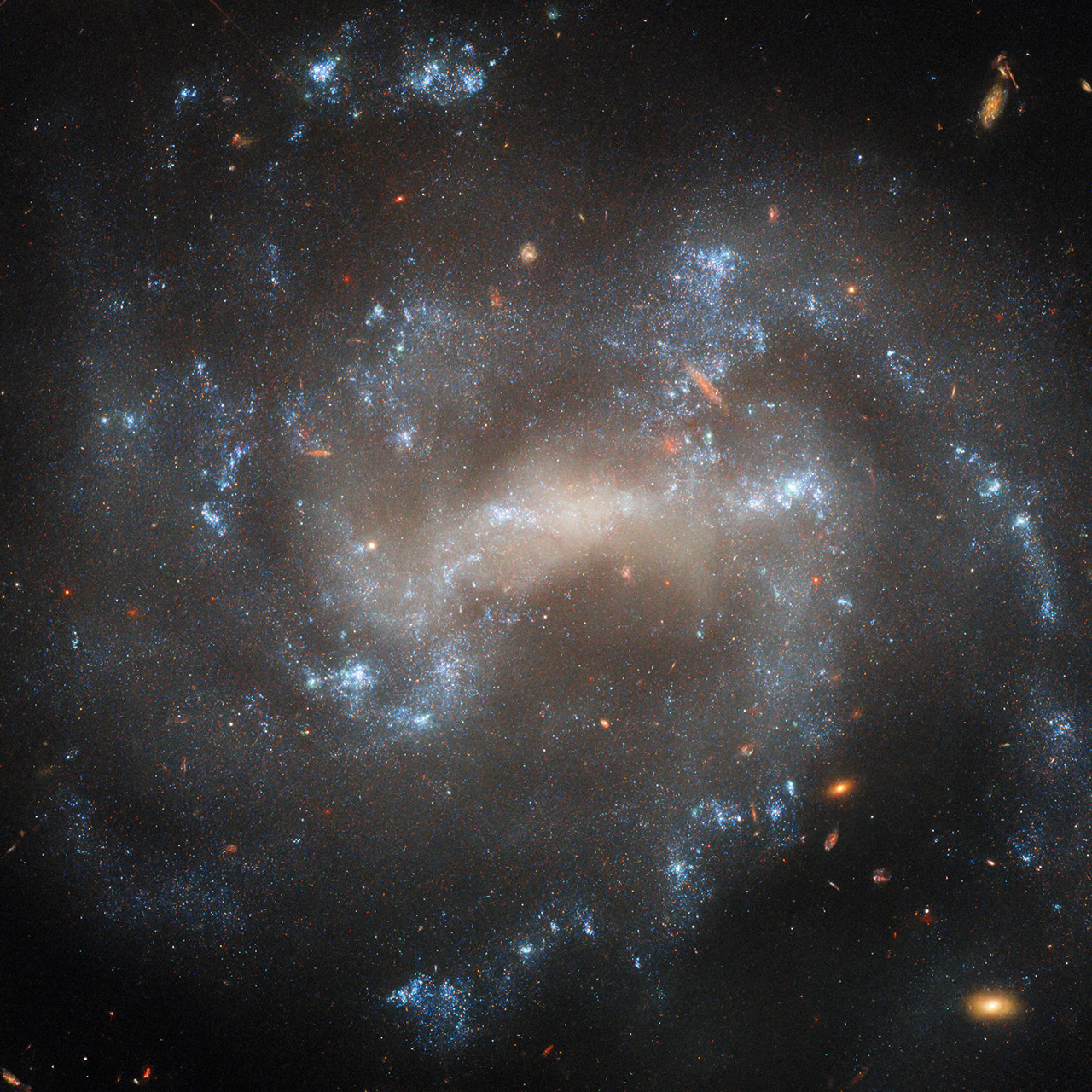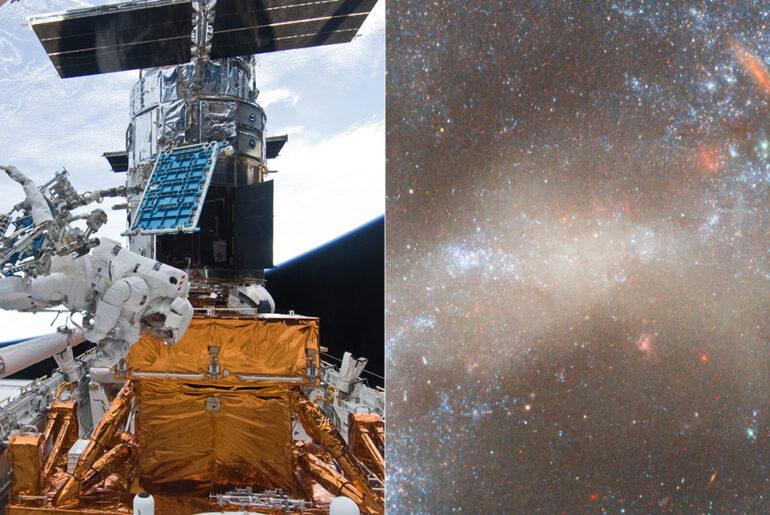
NASA / ESA’s Hubble Space Telescope captures sparkling spiral galaxy UGC 5460 with a hazy central bar, located 60 million light-years away in the constellation Ursa Major. This galaxy actually hosted two recent supernovae named SN 2011ht and SN 2015as, which caused Hubble to target this galaxy, collecting data for three observing programs that aim to study various kinds of supernovae.

SN 2015as is called a core-collapse supernova, or a cataclysmic explosion that occurs when the core of a star far more massive than the Sun runs out of fuel and collapses under its own gravity, initiating a rebound of material outside the core. As for SN 2011ht, it might have been a core-collapse supernova as well, but also may be an impostor called a luminous blue variable. The latter are rare stars that experience eruptions so large that they can mimic supernovae.
- LEGO NASA Space Set - This adult LEGO set features the Space Shuttle Discovery and the Hubble Space Telescope from NASA’s 1990 STS-31 mission,...
- Solar System Exploration - Unlock the mysteries of our solar system with this engaging 2,354-piece project, packed with authentic details and...
- Shuttle Features Galore - The space shuttle model has an opening payload bay, retractable landing gear, opening cockpit, moving elevons, space arm,...
A spiral galaxy seen close to face-on. The centre of its disc is a bright, pale yellowish oval shape. Spiral arms extend from either side of the oval through the disc on irregular paths. They are marked throughout by bright bluish-white patches of stars. Distant background galaxies appear as small orangish blobs around the spiral galaxy. In the top-left corner a nearby star shines brightly, spikes radiating from it,” said the ESA.
















